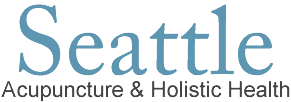I often recommend patients try a gluten-free diet because it is one of the most inflammatory and reactive proteins we eat. Gluten is found in many grains including:
· Wheat (durum, kamut, graham, semolina, spelt)
· Rye
· Barley
· Triticale
· Bulgur
· Couscous
· Einkorn
· Emmer
· Faro
· Malt extract, malt flavoring, malt syrup
· Oats** (Oats are naturally gluten free but they are processed or rolled in the same facilities as gluten products. Gluten is sticky and sticks to the machines and attaches to oats this way.)
· Be aware that “wheat-free” does NOT guarantee gluten-free. Breads made from carob-soy flour can contain up to 80% wheat flour.
Grains that are gluten-free and safe to have on a gluten-free diet are: rice, corn, soy, potato, tapioca, beans, garfava, sorghum, quinoa, millet, buckwheat, arrowroot, amaranth, teff and nut flours
The extreme form of gluten intolerance is called Celiac Disease. In this autoimmune process, the body has an immune response to gluten that causes it to attack it’s own intestinal walls and damages them, making it very difficult for the body to absorb nutrients. Celiac disease is screened for with a blood test and often confirmed with a biopsy of the intestinal wall. Sometimes if the blood test is negative but there is a high suspicion of the disease, a biopsy will be done anyway.
If you don’t have Celiac Disease, the best way to know if gluten is a problem is to eliminate it from your diet for a few weeks (I usually recommend 3-4 weeks) and see if you feel any difference. Most people have a symptom (or many symptoms) that is irritating enough to them that they want to give elimination a shot. Some of the more common symptoms I see are:
Skin: eczema, dermatitis, itching, hives, swelling, redness, acne, dark circles under eyes
Gastrointestinal: diarrhea, gas, nausea/vomiting, cramps, bloating, abdominal pain, constipation
Respiratory: wheezing, nasal congestion, trouble breathing, asthma
Other: joint pain, swelling (lips, tongue, face, throat), headache, migraines, brain fog, fatigue, fertility issues
Below is a list of food categories and specific foods that are allowed and ones that should be avoided when going gluten free (abbreviated “GF”). Additional resources are listed at the end of this list.
Breads
Allowed: Specially prepared breads using only these flours: amaranth, arrowroot, bean, buckwheat, chia, corn, flax, Indian rice grass, mesquite, millet, nut, pure gluten-free oats, potato, quinoa, rice, sorghum, soy, tapioca, and teff.
Be careful with oat bread (see above)
Avoid: Breads containing wheat (including einkorn, Durham, faro, graham, semolina, spelt), rye, barley, triticale, Kamut, bulgur, or couscous.
Flours/Thickening agents
Allowed: Amaranth, arrowroot starch, bean flour, buckwheat, chia, corn bran, corn flour, corn germ, corn meal, corn starch, mesquite, millet, Montina (Indian rice grass, GF oats, potato flour, potato starch, quinoa, rice bran, rice flour (brown, white, or sweet OK), rice polish, rice starch flour, sorghum flour, soy flour, tapioca starch, teff.
Dairy Products
Allowed: Fresh, dry, evaporated, or condensed milk; cream; sour cream**; whipping cream; yogurt
Avoid: Malted milk; some commercial chocolate drinks**; some non-dairy creamers**
**Consult label and contact manufacturers about questionable ingredients
Meat, Fish, Poultry
Allowed: All fresh meats, seafood, poultry
Be careful with some processed meats (hot dogs, lunch meats, cured meats), as well as some fish canned in water, oil, brine, or vegetable broth.
Avoid: Prepared or processed meats containing grains to avoid, such as: some sausages*, hot dogs*; bologna*; and luncheon meats; *Chili con carne*; bread-containing products, such as Swiss steak, meat loaf, meatballs, and croquettes; tuna canned with hydrolyzed protein*; turkey with hydrolyzed vegetable protein (HVP) injected as part of the basting solution; “imitation crab” or other meat analogs containing wheat starch or other unacceptable filler; quick individually frozen (QIF) seafood ‡
*Consult label and contact manufacturer to clarify questionable ingredients.
‡May be dusted with flour or other starches in processing.
Eggs
Allowed: Plain or in cooking.
Avoid: Eggs in sauces made from wheat, rye, oats, or barley. Wheat flour is often used in white sauces. Note that some restaurants may add a wheat-based filler to scrambled eggs and omelets.
Potato, Rice, Pasta, or other Starches
Allowed: White and sweet potatoes; yams; hominy; rice; wild rice; special pasta made from rice, corn, soy or other allowed ingredients. Some Asian rice* and bean thread noodles.
Avoid: Regular noodles; spaghetti or macaroni made from grains not allowed. Most packaged* or frozen rice or pasta side dishes*.
*Consult label and contact manufacturers about questionable ingredients
Vegetables
Allowed: All plain, fresh, frozen or canned vegetables
Be careful with some commercially prepared vegetables.
Avoid: Creamed vegetables*, vegetables canned in sauce*, some canned beans*, and commercially-prepared vegetables and salads.
*Consult label and contact manufacturers to clarify questionable ingredients.
Fruits
Allowed: All fresh, frozen, canned fruits
Be careful with some dried fruits*.
Avoid: Thickened or prepared fruits, some pie fillings
*Consult label and contact manufacturers to clarify questionable ingredients.
To learn more:
o The Gluten Intolerance Group
o National Digestive Diseases Clearinghouse: Celiac Disease
o “Is That Gluten Free?” iPhone App (allows you to search ingredients, brands, products and tells you if it contains gluten)
o Whole Life Nutrition Kitchen blog for GREAT recipes:
Dr. Melissa McCarty
Naturopathic Physician
Seattle Integrative Medicine
5322 Roosevelt Way NE
Seattle, WA 98105
206-525-8012
